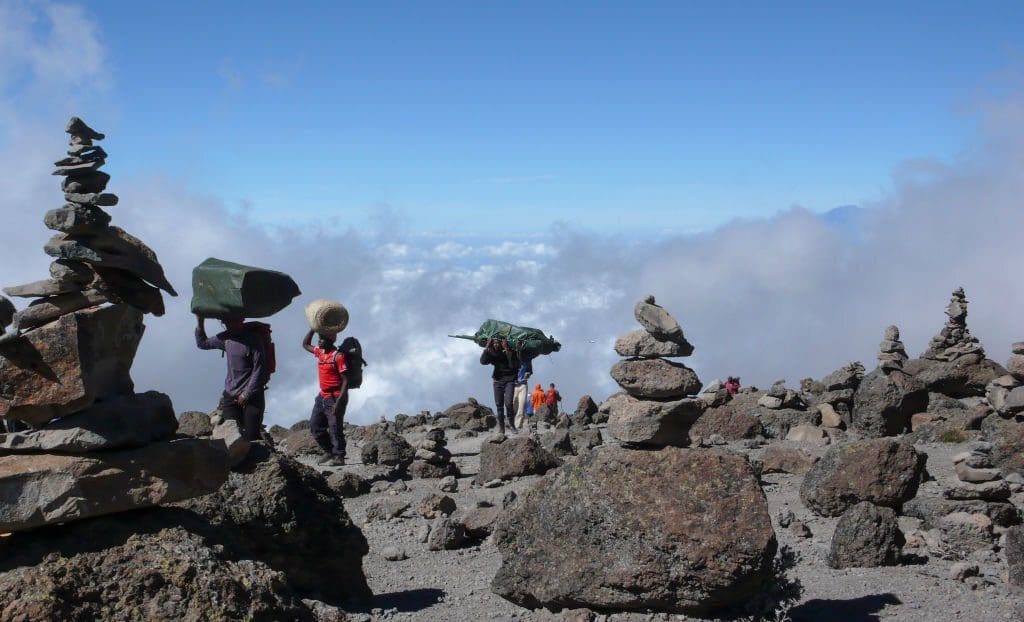Climbing Kilimanjaro costs
Climbing Mount Kilimanjaro is an epic adventure that attracts adventurers from around the world. If you’re considering taking on this challenge, it’s important to understand the costs involved and plan your budget accordingly. In this comprehensive guide, we’ll demystify the expenses associated with climbing Kilimanjaro and help you make informed decisions for your adventure.
Travel to Kilimanjaro
To embark on your Kilimanjaro journey, you’ll first need to travel to Tanzania. The mountain is located in the northeast region of the country, near the towns of Moshi and Arusha. Depending on your location, you may need to fly to one of the three international airports in Tanzania: Kilimanjaro Airport (JRO), Julius Nyerere International Airport (DAR), or Abeid Amani Karume International Airport (ZNZ).
JRO is the most convenient airport for Kilimanjaro climbers as it offers proximity to the mountain and is a starting point for safaris in the northern part of Tanzania. If you’re planning to include a visit to Zanzibar or a safari in the south of the country, you can fly into DAR or ZNZ and then catch a connecting flight to JRO.
Once you arrive at the airport, you’ll need to arrange for airport transfers to your accommodation in Moshi or Arusha. At shiri adventures airport transfers are not included in the package fee, and we charge $25 each way for this service.
Tanzania Visa
Before traveling to Tanzania, you’ll need to obtain a travel visa. The cost of a 90-day, single-entry visa is $50 for most travelers. However, US citizens are required to pay $100 due to a special travel agreement between Tanzania and the USA. You can apply for a Tanzania visa online or obtain one upon arrival in the country.
Travel Insurance
Travel insurance is a crucial aspect of any Kilimanjaro climb. It’s essential to have coverage for potential medical emergencies, trip cancellations or interruptions, and lost or damaged luggage. When choosing a travel insurance policy, make sure it includes coverage for hiking up to an elevation of 6,000 meters.
The cost of travel insurance for a Kilimanjaro climb can vary but is typically around $200. It’s important to carefully review the coverage details and ensure that your policy meets your specific needs. Many credit cards also offer automatic travel insurance when you book your flights with them, so it’s worth checking if you have any existing coverage.
Using Tech Devices in Tanzania
If you plan to use tech devices during your Kilimanjaro climb, it’s essential to consider the electrical requirements and connectivity in Tanzania. The country operates on a 230V supply voltage and 50 Hz, and the plug type used is type D. Depending on your home country, you may need to purchase a universal adapter and a voltage converter or transformer.
For communication purposes, it’s recommended to purchase a local SIM card in Tanzania. SIM cards are inexpensive, and the two major providers are Vodacom and Airtel. You can buy a SIM card at the airport upon arrival, but be prepared for a lengthy registration process.

Vaccinations and Medications
Before traveling to Tanzania, it’s advisable to visit your doctor to ensure you have the necessary vaccinations and medications. Common vaccinations for Tanzania include Hepatitis A and B, typhoid, and rabies. You may also need proof of yellow fever vaccination if you’re traveling from a country where the disease is present.
Malaria is prevalent in Tanzania, and it’s important to take anti-malaria medication before your Kilimanjaro climb. Consult with your doctor to determine the most suitable medication for your needs. Additionally, altitude sickness is a potential risk when climbing Kilimanjaro, and you may consider discussing altitude medication options with your doctor.
Trekking Gear and Clothing
When climbing Kilimanjaro, it’s crucial to have the proper trekking gear and clothing to ensure your comfort and safety. While tour operators typically provide camping equipment such as tents, tables, and chairs, you’ll need to bring your personal gear and clothing.
Some essential items to consider include thermal inner-wear, a good pair of trekking boots, trekking trousers, and a proper winter jacket. It’s recommended to bring a sleeping bag and sleeping mat suitable for temperatures as low as -20°C. If you don’t have your own gear, you can often rent or purchase equipment locally in Tanzania.
At Shiri Adventures, we provide high-quality four-season sleeping bags and sleeping mats for our clients at no extra charge. We also offer the option to rent down jackets for $60 for the entire trip. Proper trekking clothing is vital to withstand the rocky and cold conditions on Kilimanjaro.
Kilimanjaro Tour Operators
When planning your Kilimanjaro climb, it’s essential to choose a licensed tour operator as solo climbs are not allowed. Tour operators provide various services, including guiding, cooking, and portering. It’s crucial to select a reputable tour operator that prioritizes the welfare of their staff and maintains high safety standards.
The package fee charged by tour operators typically covers expenses such as Kilimanjaro National Park fees, mountain crew wages, equipment and supplies, food and drinking water, safety equipment, accommodation before and after the climb, and the operator’s commission. It’s important to review the inclusions and ensure they align with your expectations.
At Shiri adventures, we prioritize fair wages for our mountain crew and strive to create a positive working environment. Our package fee includes camping gear, meals, and experienced guides. We are committed to providing a safe and enjoyable Kilimanjaro experience for our clients.
Choice of Kilimanjaro Route
Kilimanjaro offers seven different routes, each with its own unique characteristics and acclimatization profiles. The choice of route depends on factors such as duration, difficulty level, and scenery. Longer routes generally have higher success rates due to better acclimatization.
The popular routes include the Northern Circuit, Lemosho, Machame, Rongai, Marangu, Shira, and Umbwe. The duration of the climbs ranges from five to ten days, with the Northern Circuit being the longest and Umbwe being the shortest. It’s important to select a route that suits your fitness level and allows for proper acclimatization.
At Shiri adventures, we usually lead groups on the Lemosho, Machame, and Rongai routes. These routes offer good acclimatization profiles and stunning scenery. However, we are flexible and can accommodate climbers on any of the seven Kilimanjaro routes.
Spending Cash
While most expenses are typically covered by the package fee, it’s advisable to have some cash for small purchases or emergencies. The currency in Tanzania is the Tanzanian shilling (TSh), and it’s recommended to bring US dollars for exchange. ATMs are readily available in Tanzania, and credit cards are accepted in many establishments.
The cost of drinks and small purchases in Tanzania is relatively affordable. For example, a 330 ml bottle of water costs around 900 TSh, a Coca-Cola costs around 1,000 TSh, and an imported beer costs around 5,000 TSh. Bargaining is common in tourist areas, so don’t hesitate to negotiate prices for souvenirs or other items.
Tipping on Kilimanjaro
Tipping is a customary practice when climbing Kilimanjaro and is an important part of the crew’s income. While tipping is not compulsory, it’s expected and greatly appreciated by the mountain crew. Tipping ceremonies are held at the end of each climb, where climbers pool their tip money and present it to the crew.
Recommended tip amounts per day vary depending on the crew member’s role. For porters, the suggested tip is $6-$10 per day, while assistant guides may receive $15-$25 per day. The lead guide typically receives $20-$30 per day. These amounts can be adjusted based on the level of service and satisfaction.
At Shiri Adventures, we value our mountain crew and ensure they are fairly compensated. We encourage our clients to participate in the tipping ceremony and show appreciation for the hard work and dedication of the crew.
Conclusion
Climbing Mount Kilimanjaro is a challenging and rewarding adventure that requires careful planning and budgeting. By considering the costs associated with travel, visas, insurance, gear, and tour operators, you can make informed decisions and ensure a safe and enjoyable climb. Choose a reputable tour operator, select a suitable route, and remember to show gratitude to the mountain crew through tipping. With the right preparation, you’ll be ready to conquer the majestic Kilimanjaro and create memories that will last a lifetime.
